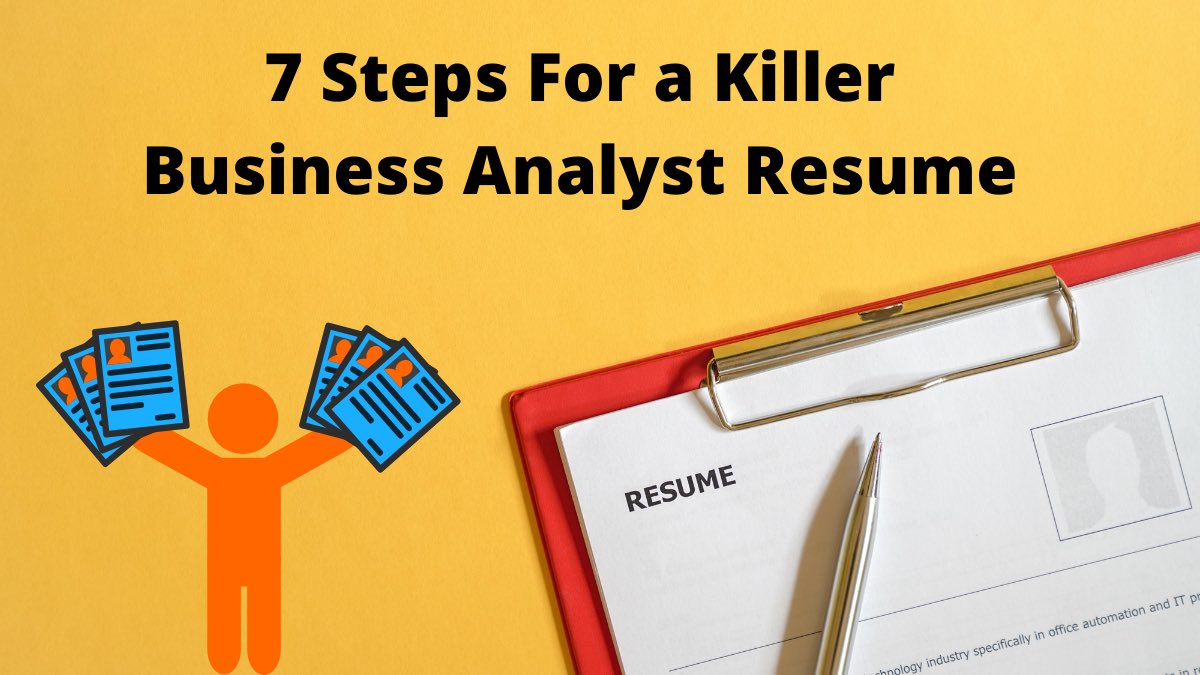Business analysis is one of the most demanding career profiles of the 21st century. With the up-gradation of technology, market competition for every business is inflating exponentially.
Killer Business Analyst Resume
According to a recent report by the United States Bureau of Labor Statistics, nearly 907,600 management and business analysts were working across the country in 2020.
The same report states that the business analyst jobs will gain 14% faster growth than average from 2020 to 2030.
The statistics reflect a bright future for entry-level business analysts. Hence, it is necessary for you to learn ‘how to write a business analyst resume?’ to apply for a business analyst job without any hurdle.
Advertisement
Content in this Article
This article is focused to guide you throughout the business analyst resume-building process. You can follow the below-given steps to build a highly impactful business analyst resume:
Step 1- Create a Master Folder
To minimize errors while making your business analyst resume, we recommend you create a master folder first. You can add all of your important documents and certifications in this folder that can be used while crafting your resume.
Step 2- Make an Outline
After collecting all of your documents in the master folder, you can outline your resume according to your skills and experience.
If you are a continuously working professional without any career gap, you can use the reverse chronological resume format while outlining the resume.
In case you have a career gap, a functional resume format will be the best pick for you.
Step 3- Start With Writing Your Personal Details
You can start writing your name as the resume header and your personal details including contact number, email id, location, and LinkedIn profile URL below that.
Writing your details clearly and professionally will impress the recruiter and will help you in moving ahead smoothly in the recruitment process.
Step 4- Mention Your Educational Qualifications and Certifications
After adding your personal details, you can start writing about your educational degree and other relevant certifications you have relevant to the job profile.
You can add the below-given educational details to make this section impactful:
- Name of degree
- Name of the affiliated institution
- Location of institution
- Enrollment and Graduation year
- CGPA obtained
In terms of certifications, you can use the below-given format while writing about your certifications:
Name of Certification | Name of Institution | Date of Completion
Step 5- Add Professional Experience and Training Details in Resume
Most of the recruiters spend extra time while checking the professional experience section in a resume. However, they do not spend more than a few seconds on a resume due to the large number of applicants.
Hence, you can add your professional experience and training details in bullet points to improve the readability and hook your recruiter. You can follow the below-given points while framing your resume points:
- Use power verbs to start every bullet point
- Highlight important metrics and keywords
- Quantify your points wherever necessary
Step 6- Make Separate Sections For Key Skills and Technical Skills
To improve the effectiveness of your resume you can add your technical skills and soft skills in separate sections.
Making separate sections for your skills will make your resume look organized. You can use the job description of Google to get relevant skills for your targeted job profile.
Step 7- Craft an Impressive Resume Summary
A resume summary is the first element that a recruiter will see in the resume. Hence, it is important to craft it elegantly in an easy-to-read language.
You can add keywords in your summary picked up from the job description to make it more compatible with the applied profile.
Key Takeaways
Take a look at the key takeaways of this article:
- Create a master folder and collect your important documents for a hassle-free resume building experience
- Outline your resume professionally in reverse chronological format to impress the recruiter
- Mention your personal details to remove the connectivity barriers
- Add your educational details and certification details to make the resume technically strong
- Write about your professional experience and training in bullet points to improve readability
- Showcase your technical skills and soft skills in separate sections to improve the hierarchy
- Craft an impressive and keyword-stuffed resume summary in easy-to-read language
You can follow these steps to build a killer business analyst resume. Still, if you need any resume-building assistance, you can mention your questions and queries in the below-given comment section. Our experts will follow you up as soon as possible.
Recommended

